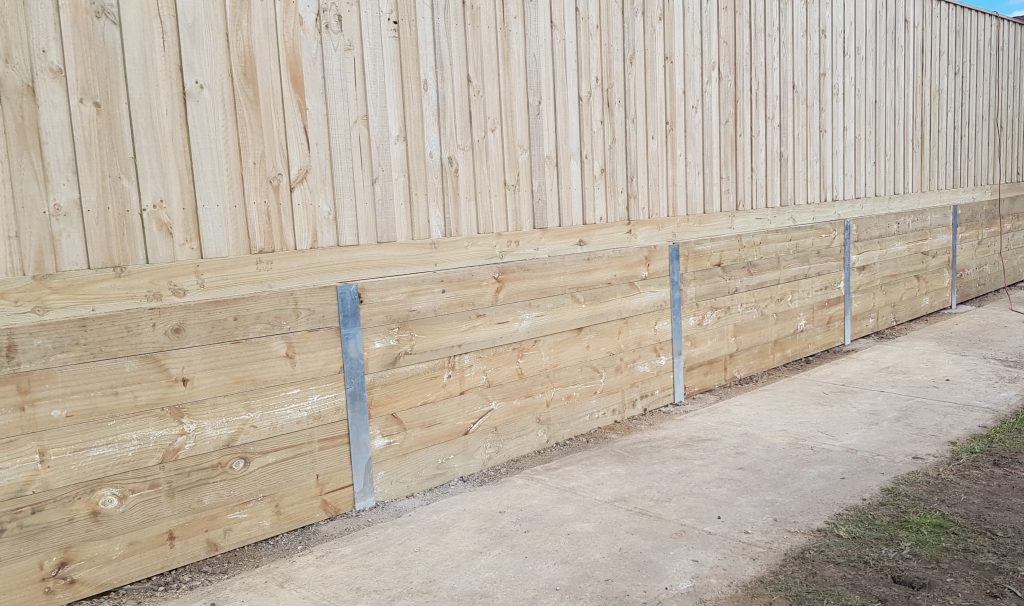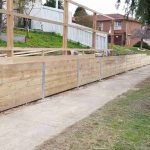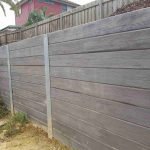Introduction
When it comes to constructing a structure or a landscape, the synergy between designers and keeping wall contractors is frequently ignored. Yet, this collaboration is crucial for guaranteeing toughness, aesthetic appeal, and structural integrity. Maintaining walls serve not only as http://lukasjfax300.lucialpiazzale.com/style-trends-from-top-rated-retaining-wall-builders practical structures however likewise contribute significantly to the total design of a job. In this thorough post, we will dive deep into the intricate relationship in between architects and retaining wall home builders, checking out how their cooperation results in effective building and construction outcomes.
Understanding Keeping Walls
What Are Maintaining Walls?
Retaining walls are structures created to keep back soil and avoid disintegration on sloped landscapes. They come in different products, consisting of concrete sleepers, H beams, wood sleepers, wood sleepers, and stone. The choice of products impacts both the performance and looks of the wall.
Importance of Maintaining Walls in Construction
Retaining walls play a critical role in landscaping by:
- Preventing soil erosion Managing water drainage Creating functional land space Enhancing visual appeal
Their significance can not be overstated; they are vital for keeping the integrity of slopes and making sure that structures above them stay stable.

Architects: The Visionaries Behind Designs
Role of Designers in Construction Projects
Architects are responsible for imagining spaces that balance functionality with aesthetic appeals. They produce styles that satisfy clients' requirements while sticking to local building codes and regulations.
How Architects Select Maintaining Wall Solutions
Architects take into consideration a number of aspects when picking retaining wall options:
- Site Conditions: Is the soil stable? What are the drain conditions? Aesthetic Appeal: How will the wall fit into the overall design? Material Selection: Which products will best serve the desired purpose?
They must team up carefully with maintaining wall home builders to make sure that their visions can be performed effectively.
Retaining Wall Builders: The Practical Experts
Who Are Retaining Wall Builders?
Retaining wall contractors include specialists who focus on building these vital structures. Their know-how lies in understanding soil mechanics, material residential or commercial properties, and construction techniques.
Skills Required for Retaining Wall Installers
A proficient retaining wall installer need to possess:
- Knowledge of engineering principles Experience with different materials (concrete sleeper, timber sleeper) Problem-solving skills to resolve site-specific challenges
These skills allow them to perform strategies laid out by designers efficiently.
Behind the Scenes: The Partnership Between Architects and Retaining Wall Builders
The collaboration in between designers and maintaining wall contractors is a dance of imagination and practicality. On one hand, designers provide innovative styles; on the other hand, home builders bring those designs to life through their technical expertise.
Initial Consultation: This stage involves conversations about design concepts. Site Analysis: Both parties evaluate website conditions together. Material Selection: They collaborate on picking appropriate materials like stone or concrete sleeper. Construction Planning: A comprehensive building plan is developed. Execution: Home builders start work under architects' supervision. Final Review: After conclusion, both parties evaluate the job versus preliminary objectives.This collaboration guarantees that imaginative visions are recognized while preserving structural integrity.
Material Options in Retaining Wall Construction
Concrete Sleepers vs Lumber Sleepers
Choosing between concrete sleepers and timber sleepers can be challenging for both designers and contractors. Here's a brief contrast:
|Product|Pros|Cons|| -------------------|-----------------------------------------|-------------------------------------------|| Concrete Sleepers|Resilient, low maintenance|Can be more pricey|| Timber Sleepers|Aesthetically pleasing|May require more upkeep with time|

Both materials have their distinct benefits depending upon project requirements.
The Engineering Element of Retaining Walls
Soil Mechanics 101 for Designers and Builders
Understanding soil mechanics is important in developing reliable maintaining walls. Designers should consider factors such as soil type, load-bearing capacity, and drainage patterns when collaborating with retaining wall contractors.
Water Drainage Considerations
Effective water drainage is vital for preventing hydrostatic pressure buildup behind keeping walls. This pressure can compromise structural stability if not handled appropriately through correct design features like weep holes or drain pipes.
Common Difficulties Faced Throughout Collaboration
Communication Barriers Between Professionals
Miscommunication can lead to considerable issues throughout building projects. Regular conferences in between architects and builders help reduce misunderstandings.
Budget Restrictions Impacting Style Choices
Sometimes budget plan restrictions force modifications in designs initially imagined by architects. Finding cost-efficient services without compromising quality needs team effort from both sides.

Case Research studies Highlighting Effective Collaborations
Residential Job Case Study: Hilltop Villa
In this case study involving a high-end residence on a hillside:
- Architects designed expansive balconies requiring robust retaining walls. Builders used H beams along with stone exteriors for strength and beauty.
The outcome was not just practical but likewise amazingly attractive!
Commercial Project Case Research study: Urban Plaza Development
Here's another fascinating project:
- Architects imagined an urban plaza total with garden areas needing several maintaining walls. Builders collaborated successfully utilizing concrete sleepers for stability while maintaining visual appeal through landscaping components incorporated into the wall structure.
Both tasks show how effective cooperation causes remarkable outcomes!
FAQs
1. What is a maintaining wall?
A keeping wall is a structure developed to hold back soil from sloping landscapes or embankments to prevent disintegration or collapse.
2. What types of materials are utilized in maintaining walls?
Common products include concrete sleepers, lumber sleepers (wood), stone blocks (natural stone), H beams (metal), among others based on project requirements.
3. How do I choose a great keeping wall builder?
Look for experience level-- examine reviews from previous customers-- and ensure they understand regional building regulations in addition to required engineering concepts related particularly to your site conditions!
4. Why do I require an architect when developing a maintaining wall?
A designer provides vital style input customized specifically towards your needs while considering visual preferences; plus they guarantee compliance with guidelines throughout building and construction phases!
5. Can I develop my own keeping wall?
While DIY tasks might seem attractive economically speaking-- it's wise consulting specialists initially because improper installation might lead severe security threats down line due lack understanding about soil mechanics etc.
6. What must I think about before setting up a keeping wall?
Consider aspects such as your site conditions (soil type/drainage), preferred aesthetics/material choices available within budget restraints together with regulative concerns relating where you live!
Conclusion
In conclusion, understanding "Behind the Scenes: The Partnership In Between Architects and Retaining Wall Builders" highlights how crucial it is for these two occupations to work together seamlessly towards effective project results! Their collaborations not just improve performance but also raise aesthetic appeal-- creating gorgeous areas we delight in every day! It's clear that neither celebration can achieve optimal outcomes alone; thus cultivating strong relationships built on trust shared respect will ultimately lead us all closer towards accomplishing our shared objectives within building and construction industry!